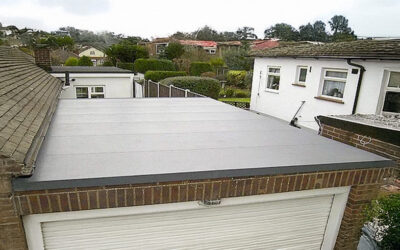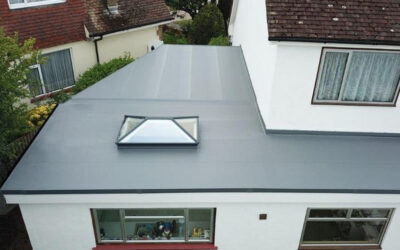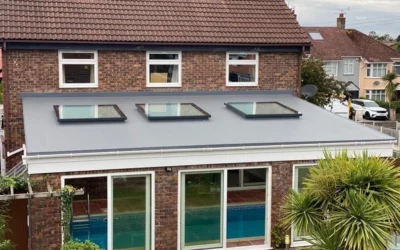Usually, it’s during the winter that people worry about their flat roofs. Heavy downpours, freezing temperatures, ice – these can all have a devastating effect on a flat roof, particularly if it is approaching its expiry date.
However, the truth is that the summer can be just as damaging to a traditional felt flat roof. In fact, the stresses that are put on a roof when the temperatures rise can result in a weakened flat roof that fails when the heavy rain returns.
If you are concerned that the recent high temperatures are damaging your roof, we strongly advise that you contact a professional to check your flat roof for any potential issues. In some cases, repairs to an isolated problem can be fixed but if your flat roof is nearing its end, replacement is the most cost-effective solution.
There are five key issues your flat roof may suffer during the summer months:
- · Blistering
- · Flashing damage
- · Thermal movement
- · Standing water
- · Inadequate installation
Blistering
If your flat felt roof has a small crack or hole, water can penetrate. If it’s a hot and sunny day, this water is heated all day. It can then expand and life the felt from the flat roof, resulting in bubbles or blisters.
You should never ignore blistering as it can quickly lead to further issues. If you are able to catch the issue quickly, it is possible to replace the affected sections of felt. If, however, the damage is already extensive, replacement really is the only option.
Flashing damage
Fungal growth from a build up of moisture can cause flashing damage. During the summer months, this fungal growth can accelerate because there are more hours of sunlight. If your flashing is damaged it can affect drainage – something that is vital to maintaining your flat roof’s condition. If drainage is compromised, your flat roof will begin to fail.
Thermal movement
In the summer, the warm days and cooler nights can lead to traditional flat felt roofs expanding and contracting, allowing water to penetrate into the roof.
Standing water
Much as we’re enjoying this beautiful sunshine, the British weather has never been particularly reliable. Most summers see flash flooding in some parts of the country. With this in mind, standing water can be a major cause of flat roof damage.
Standing water(water that doesn’t drain or evaporate within 72 hours) can lead to leakages if there is insufficient drainage or the roof is too flat.
Damage can be rapid or take years to become a problem, depending on the age of your flat roof. The best way of avoiding a leak is to have it regularly inspected. This will allow minor problems to be corrected before they get worse.
Inadequate installation
If the original installation was inferior, this will magnify any heat-related issues and accelerate sun damage. Some flat roofs are installed using sub-standard structural materials and over time, they may sag, allowing rainwater to pool. Others are simply too flat (a flat roof is actually very slightly pitched to enable water to drain).
What to consider
If you believe it is time to replace your flat roof, please make sure that you choose a recommended installer who offers full guarantees and warranties on products and work carried out. This should then eradicate the problem of inadequate installation.
Modern single-plyPVC membrane roofing systems are engineered to form a 100% watertight covering designed to withstand the elements. High-Tech Membrane Roofing’s carefully chosen flat roofing products are made from breathable PVC, which means they are unaffected by condensation, moss, algae and damaging UV rays.
Want to know more? Call High-Tech Membrane Roofing today and we would be more than happy to answer any of your questions.




















